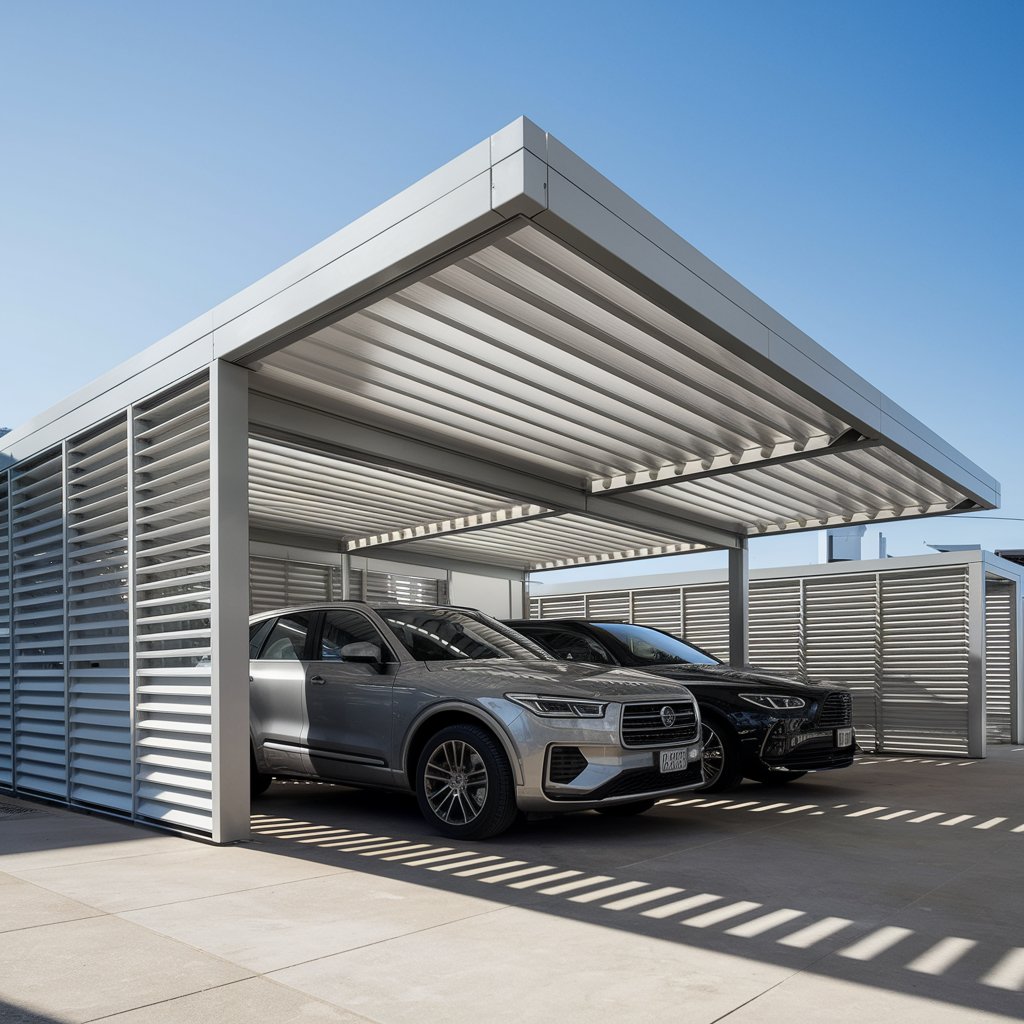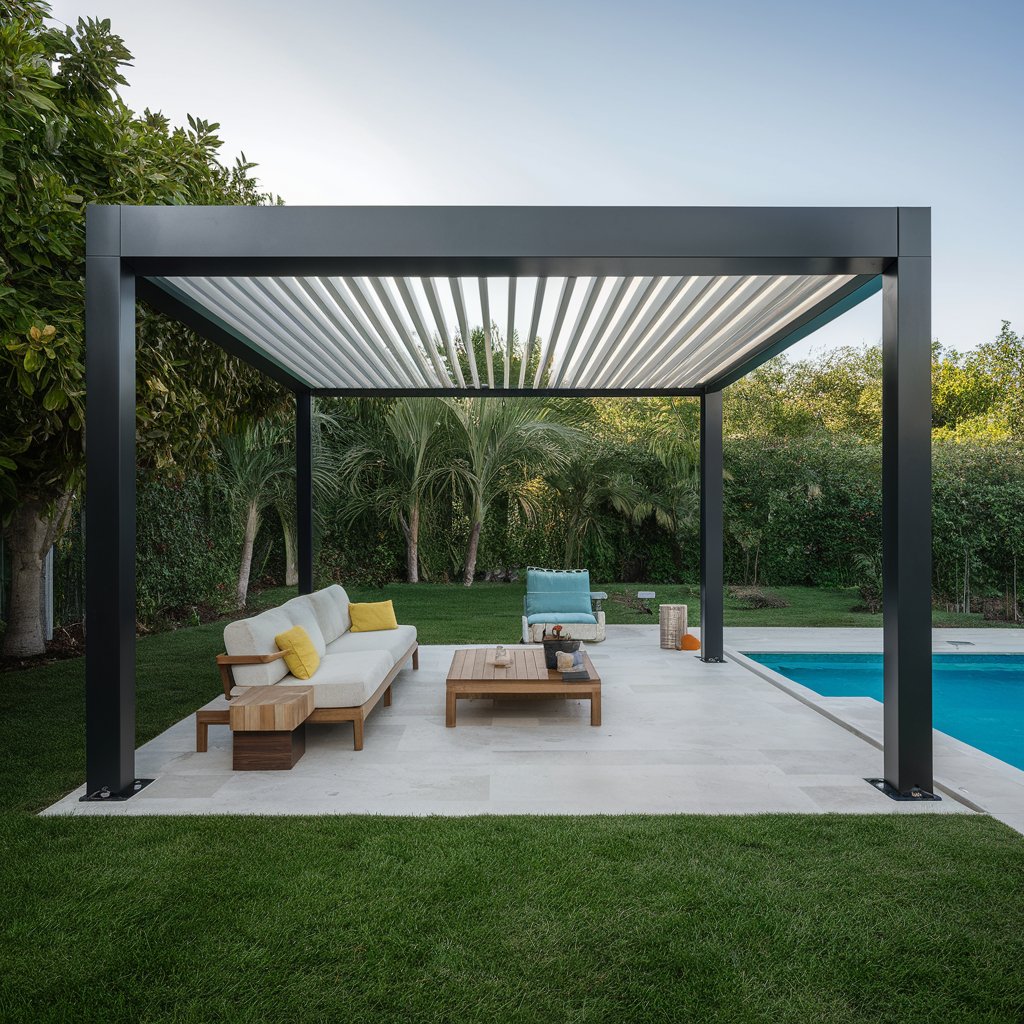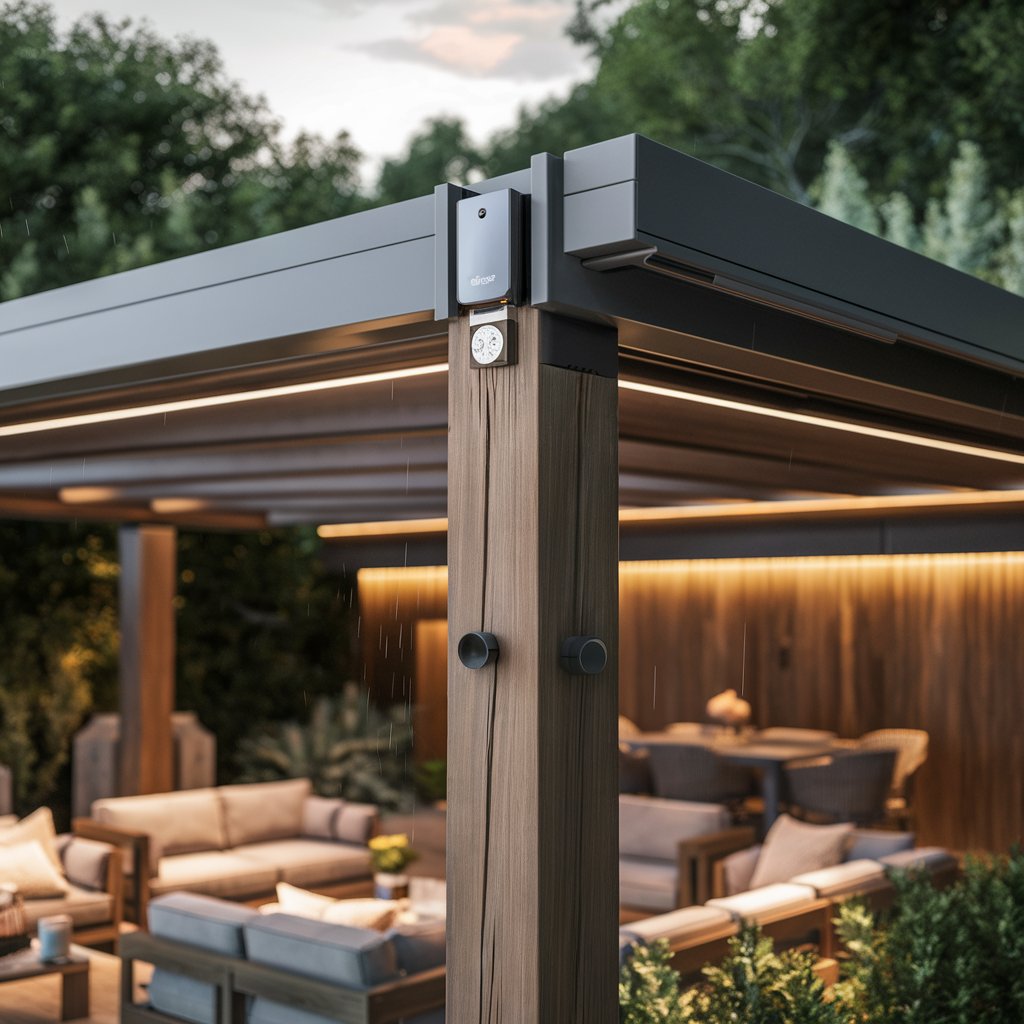An aluminum carport is a structure typically used to shelter vehicles from adverse weather conditions. Made primarily from aluminum, these carports are known for their durability, ease of maintenance, and versatility. They come in various styles and sizes, and can be either freestanding or attached to a building. This comprehensive guide explores the benefits, types, installation, maintenance, and considerations involved in selecting and using aluminum carports.

Benefits of Aluminum Carports
Durability
Aluminum carports are highly durable due to the nature of the material. Aluminum is resistant to rust and corrosion, unlike steel, which can corrode over time if not properly treated. This characteristic makes aluminum an excellent choice for carports, especially in areas with high humidity or frequent rainfall. Additionally, aluminum does not warp, crack, or rot like wood, ensuring the carport remains structurally sound for many years.
Lightweight
One of the most significant advantages of aluminum is its lightweight nature. This property makes aluminum carports easier to handle and install compared to steel or wood counterparts. The lightweight nature of aluminum also reduces the load on the foundation, potentially lowering installation costs. Furthermore, if the carport needs to be relocated, the process is much simpler with a lightweight aluminum structure.
Low Maintenance
Aluminum carports require minimal maintenance, which is a significant benefit for many homeowners and businesses. Unlike wood, aluminum does not need to be painted or treated regularly to prevent decay. A simple periodic cleaning with water and mild detergent is usually sufficient to keep the carport looking new. Additionally, aluminum is resistant to pests such as termites, which can be a concern with wooden structures.
Cost-Effective
In terms of cost, aluminum carports are generally more affordable than those made from steel or wood. The material itself is less expensive, and the ease of installation can further reduce labor costs. Over the long term, the minimal maintenance requirements and durability of aluminum also contribute to its cost-effectiveness.
Versatility
Aluminum carports are versatile structures that can be used for various purposes. While their primary use is to shelter vehicles, they can also be adapted for other uses such as protecting boats, RVs, or outdoor equipment. Some people use aluminum carports as covered outdoor living spaces, creating a shaded area for relaxation or entertainment. The versatility of aluminum carports extends to their design as well, with many customization options available to suit individual needs and aesthetic preferences.
Types of Aluminum Carports
Freestanding Aluminum Carports
Freestanding aluminum carports are independent structures that can be placed anywhere on a property. They do not rely on an existing building for support, which provides flexibility in terms of location. Freestanding carports are ideal for properties with ample space and for those who may need to move the carport in the future.
Attached Aluminum Carports
Attached aluminum carports are connected to an existing building, such as a house or garage. This type of carport offers added stability and convenience, as it typically shares one or more walls with the building. Attached carports are a good option for properties with limited space, as they can be integrated into the existing structure without taking up additional land.
Single Car Aluminum Carports
Single car aluminum carports are designed to shelter one vehicle. They are typically smaller in size and more affordable than larger models. Single car carports are ideal for homeowners with only one vehicle or limited space.
Double Car Aluminum Carports
Double car aluminum carports are larger structures designed to accommodate two vehicles side by side. These carports provide ample space for two cars, making them suitable for households with multiple vehicles. Double car carports are also popular for those who need additional storage space for outdoor equipment or other items.
RV Aluminum Carports
RV aluminum carports are specifically designed to shelter recreational vehicles, which are often larger and taller than standard cars. These carports provide the necessary height and length to accommodate RVs, protecting them from the elements and prolonging their lifespan.
Custom Aluminum Carports
Custom aluminum carports can be tailored to meet specific needs and preferences. These carports can be designed in various sizes, styles, and configurations, with options for enclosed sides, additional storage space, or decorative elements. Custom carports are ideal for those with unique requirements or specific aesthetic preferences.
Installation of Aluminum Carports
Site Preparation
Proper site preparation is crucial for the successful installation of an aluminum carport. The site must be level and free of debris to ensure the carport is stable and secure. Depending on the location and soil conditions, additional site preparation, such as grading or compacting the soil, may be necessary.
Foundation
While some aluminum carports can be installed directly on the ground, others may require a foundation for added stability. Common foundation options include concrete pads, footings, or piers. The type of foundation needed will depend on the size and design of the carport, as well as local building codes and regulations.
Assembly
The assembly process for aluminum carports varies depending on the design and manufacturer. However, most aluminum carports come with detailed instructions and are designed for easy assembly. The process typically involves assembling the frame, securing it to the foundation, and attaching the roof panels. In some cases, additional bracing or supports may be required to ensure the structure is stable and secure.
Professional Installation
While many aluminum carports are designed for DIY installation, some homeowners may prefer to hire a professional for the job. Professional installation ensures the carport is assembled correctly and complies with local building codes. Additionally, hiring a professional can save time and effort, particularly for larger or more complex carports.
Maintenance of Aluminum Carports
Cleaning
Regular cleaning is essential to keep an aluminum carport looking new and to prevent the buildup of dirt and debris. A simple wash with water and mild detergent is usually sufficient. For tougher stains or buildup, a soft brush or sponge can be used. It is important to avoid using abrasive materials or harsh chemicals, as these can damage the aluminum surface.
Inspection
Periodic inspection of the carport is necessary to identify any potential issues before they become major problems. This includes checking for loose screws, damaged panels, or any signs of wear and tear. Addressing these issues promptly can prevent further damage and prolong the lifespan of the carport.
Repairs
If any damage is detected during the inspection, it should be repaired as soon as possible. This may involve tightening loose screws, replacing damaged panels, or addressing any structural issues. In some cases, professional repair services may be needed, particularly for more significant damage.
Protective Coatings
While aluminum is naturally resistant to rust and corrosion, applying a protective coating can provide additional protection and enhance the appearance of the carport. There are various coatings available, including clear sealants and colored finishes. These coatings can help protect the aluminum from environmental elements and extend the lifespan of the carport.
Considerations When Choosing an Aluminum Carport
Size
One of the most important factors to consider when choosing an aluminum carport is the size. The carport must be large enough to accommodate the vehicle(s) it is intended to shelter. It is also important to consider any additional space needed for storage or other purposes. When determining the size, it is helpful to measure the vehicle(s) and allow for extra space for maneuvering and access.
Design and Style
Aluminum carports come in various designs and styles to suit different needs and aesthetic preferences. When choosing a design, consider factors such as the roof style (flat, gabled, or curved), the type of support structure (freestanding or attached), and any additional features (enclosed sides, decorative elements, etc.). The design should complement the existing architecture of the property and provide the desired level of protection and functionality.
Local Building Codes and Regulations
Before installing an aluminum carport, it is essential to check local building codes and regulations. Some areas may have specific requirements for carport construction, including permits, setbacks, and height restrictions. Compliance with these regulations is necessary to avoid potential fines or legal issues.
Climate and Weather Conditions
The local climate and weather conditions can significantly impact the performance and durability of an aluminum carport. In areas with heavy snowfall, a carport with a steeper roof pitch and additional bracing may be necessary to prevent snow buildup. In regions with high winds, securing the carport with anchors or additional supports can enhance stability. It is essential to choose a carport design and construction that can withstand the local weather conditions.
Budget
Budget is always a crucial consideration when choosing an aluminum carport. While aluminum carports are generally more affordable than other materials, costs can vary depending on the size, design, and any additional features. It is important to establish a budget and choose a carport that meets the desired requirements without exceeding financial constraints.
Conclusion
Aluminum carports offer a durable, low-maintenance, and cost-effective solution for protecting vehicles and other outdoor equipment from the elements. With various types, designs, and customization options available, there is an aluminum carport to suit nearly any need or preference. Proper installation and regular maintenance are essential to ensure the longevity and performance of the carport. By considering factors such as size, design, local building codes, and climate conditions, homeowners can choose an aluminum carport that provides the desired level of protection and functionality for years to come.


